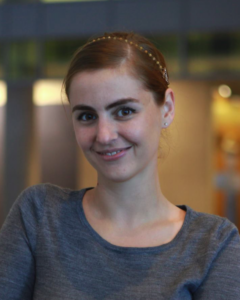
What Distance Learning Taught Me About Good Teaching
There were still three months to go in the school year. My students had amazed me with how well they took to this strange new normal, but in recent weeks it seemed that everyone’s focus had started to wander. We all needed a new jolt of energy, so my co-teachers and I decided to make a big push for a fresh start when we introduced new schedules on March 1.
As we prepared for the launch of the new schedules, I talked at length with my students. I texted their families. “We start at 9 o’clock sharp, please be on time!” And then, at 8:58 a.m, my internet connection went down. Reader, I was not in my own Zoom room at 9 o’clock for the All-Important launch of our new schedule.
As teachers, we are constantly told that we should hold ourselves and our students to high expectations. To this I can only say, ‘Yes and.’ Yes and, as last year made so abundantly clear, we must recognize that some things are outside of our control. And an essential element of our jobs is to model a healthy attitude and balance for our students.
Last year, as the SEL, social and emotional learning, teacher leader for my school, I attended monthly sessions with other SEL teacher leaders from Oakland Unified School District. Our role at our sites was to serve as SEL liaisons and to model best practices for SEL-integration. This is an essential task every year, but it took on a new resonance during a year of upheaval and reimagining. At one of our monthly sessions, Oakland Unified School District SEL Program Manager Aija Simmons framed an activity with a few words that stuck with me: “We know you are competent — you don’t need to perform competence.”
I turned this phrase over in my head throughout last February. So as we started class a few minutes late on March 1st, I didn’t pretend nothing unusual had happened, I didn’t wave it off, nor did I abjectly apologize. I took a deep breath, laughed, and accepted that this was a huge — albeit unexpected! — opportunity. I talked through what had happened with students, and modeled the kind of attitude I wanted to cultivate in my students. I had tried, and things hadn’t gone to plan. That happens sometimes, and it’s not the end of the world.
There are so many things that, like lousy internet, lie outside the bounds of our students’ control. Chris couldn’t find himself a quiet place for Zoom class in a one-bedroom apartment with four siblings and Marlhin couldn’t make her new baby brother sleep quietly through the night. We absolutely should model high expectations for ourselves and our students, but always alongside the understanding that life is complicated, and we’re all humans. I want my students to know that they don’t have to perform and I want them to have compassion for themselves and others. The tragicomic timing of that particular internet failure drove home for me the power that I have in shaping the stories my students tell about themselves as they navigate the inevitable challenges of life — it’s a power I have been more intentional about ever since.
The lessons of subpar internet service didn’t stop there. My students last year constantly astounded me with their responsibility, creative thinking, and community-mindedness.
Drats! My internet connection lapsed, and — not for the first time — I was booted out of Zoom during one of my small group times. When I returned all my students’ cameras were off and their mics were muted.
“Oh no, where did you go???” I exclaimed.
Aleeah popped back on screen. “We’re here!” she said, “I just told everyone we should stay calm and wait for you to get back…”
The rest of the students’ cameras flickered back on, and everyone grinned, evidently quite pleased with themselves. We debriefed this bit of student-led problem-solving and had an excellent class.
With the end of Zoom teaching, my students this year won’t have to navigate being in a room without a teacher. But I won’t soon forget this lesson — our students are capable of handling meaningful responsibilities and they benefit from opportunities to practice. Even in the instances when things didn’t go so smoothly, these internet hiccups provided a chance for authentic student-led problem-solving, learning and growth. As much as I’m looking forward to the end of last year’s particular tech struggles, I am also excited to go beyond classroom jobs and find more ways to honor my students’ ideas and desires as we co-create our learning environment.
Although there aren’t many aspects of virtual school that I will miss, it taught me a lot. As we return to our buildings full-time this year, I am planning to keep these learnings top of mind.
 After teaching in Taiwan for seven years and completing her teaching credential and M.A. in Elementary Education at Stanford, Kate Keith landed at Greenleaf TK-8, in East Oakland, in 2015. She hasn’t looked back since. Few things make her happier than one of her second graders announcing about a book — “I didn’t like it. I LOVED it….” Her students will be quick to point out that she wears a lot of black, often rhapsodizes about how cool tap water is the greatest drink on earth, and has been known to slip into a variety of silly accents.
After teaching in Taiwan for seven years and completing her teaching credential and M.A. in Elementary Education at Stanford, Kate Keith landed at Greenleaf TK-8, in East Oakland, in 2015. She hasn’t looked back since. Few things make her happier than one of her second graders announcing about a book — “I didn’t like it. I LOVED it….” Her students will be quick to point out that she wears a lot of black, often rhapsodizes about how cool tap water is the greatest drink on earth, and has been known to slip into a variety of silly accents.
